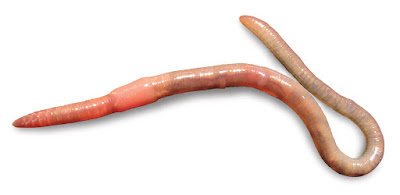 |
| A live individual of a Kazimierzus sp.
photo: Samuel James
DOI: 10.3897/AfrInvertebr.57.10042 |
Abstract
A review of the genus Kazimierzus Plisko, 2006, based on available type material enriched by study of selected specimens from the earthworm collection gathered at the NMSA and literature, revealed that the species presently accredited to this genus are characterized by unique features and clearly differ from the species of the other genera endorsed to Microchaetidae. Basing on this discovery the genus Kazimierzus is separated from Microchaetidae and Kazimierzidae fam. n. is erected to accommodate the whole 21 species of this genus. Species accredited to the new family Kazimierzidae are listed, their peculiar characters and specific distribution discussed.
Keywords: Kazimierzus, Oligochaeta, South Africa, megadrile, earthworms, indigenous species, Afrotropical region
Taxonomy
Kazimierzidae Nxele & Plisko, fam. n.
http://zoobank.org/3C9091CD-990A-448E-8153-B88671266761
Type genus: Kazimierzus Plisko, 2006: 46.
Diagnosis: Dorsal blood vessel simple throughout the body, rarely enlarging in segments 8 or 9. Excretory system holoic with nephridial bladders proclinate J–shaped. Testes arranged in holandric (male funnels in segments 10 and 11) or metandric (male funnels in segment 11) condition, enclosed or free. Seminal vesicles one or two pairs, confined to one or two segments (in 11 or 12, or in 11 and 12); the latter pair may be extended backwards, behind segment 12 (sometimes to segment 30). Spermathecae testicular or post testicular. Oesophageal gizzard in 7, muscular. Some of the preclitellar septa 4/5–9/10 variably thickened. Calciferous glands not stalked, in one or two segments (9, 10 or 11): encircling oesophagus with vestigial medial and dorsal grooves, or dorsoventral, paired, with obvious medial and dorsal grooves. Secondary annulation of preclitellar segments present; segment 1 and 2 fused appearing as one segment, 4–9, 10 ringleted with 2 or 3 ringlets, annulated or not. Setae minute, eight per segment in four pairs.
Description: Pigmented or not; alive violetish-grey or grey; preserved whitish grey. Body length not exceeding 350 mm, and 2–15 mm wide at tubercula pubertatis. Average number of segments 100–550. Setae minute; on preclitellar segments visible on various segments or easily visible on papillae, on post clitellar segments in regular rows. Female pores paired, in 14. Clitellum saddle-shaped. Tubercula pubertatis variable in shape and location. Papillae present, located variably. Spermathecal pores located in or behind testis segments. Vasa deferentia paired in holandric, one pair in metandric species. Genital glands various in size and position. Spermathecal ampullae with variably shaped ducts.
Distribution: All species presently accredited to Kazimierzus are known from a limited area in the western and south-western Atlantic coast of South Africa. The distribution of these species is poorly known as the most known species have only been collected from their type localities, some species represented only by a holotype. The species are known from variable biotopes: wet, muddy soil, or very dry soil; collected between hard rocks in mountain areas characterized by winter-fall and associated with topography of western escarpment and neighbouring Namaqualand, boardering the Atlantic seaboard. Species occurrence may be expected to continue from the Northern Cape Province to the neighbouring Namibia. The distribution pattern observed in Kazimierzus may be influenced by the soil, vegetation (Succulent Karoo Biome) or habitat transformation although this has never been tested.
Remarks:
There is currently one genus, Kazimierzus, in this family comprising the following species: Kazimierzus alipentus (Plisko, 1998); K. circulatus (Plisko, 1998); K. crousi (Pickford, 1975); K. davidi (Plisko, 1998); K. franciscus (Pickford, 1975); K. guntheri (Pickford, 1975); K. hamerae (Plisko, 1998); K. imitatus (Plisko, 1998); K. ljungstroemi (Pickford, 1975); K. metandrus (Plisko, 1998); K. obscurus (Plisko, 1998); K. occidualis (Plisko, 1998); K. occiduus (Plisko, 1998); K. pauli (Plisko, 1998); K. pearsonianus (Pickford, 1975); K. pentus (Plisko, 1998); K. peringueyi (Michaelsen, 1913); K. rosai (Michaelsen, 1908); K. senarius (Plisko, 1998); K. sirgeli (Plisko, 1996); K. sophieae (Plisko, 2002).
Thembeka C. Nxele, J. Danuta Plisko, Tarombeta Mwabvu and T. Oliver Zishiri. 2016. A New Family Kazimierzidae for the Genus Kazimierzus, earlier recorded to the composite Microchaetidae (Annelida, Oligochaeta). African Invertebrates. 57(2); 111-117. DOI: 10.3897/AfrInvertebr.57.10042
Plisko, J.D. 2006. A systematic reassessment of the genus Microchaetus Rapp, 1849: its amended definition, reinstatement of Geogenia Kinberg, 1867, and erection of a new genus Kazimierzus (Oligochaeta: Microchaetidae). African Invertebrates. 47: 31–56. http://africaninvertebrates.org/ojs/index.php/AI/article/view/255
Unfamiliar bloodline: New family for an earthworm genus with exclusive circulatory system http://blog.pensoft.net/2016/10/12/unfamiliar-bloodline-new-family-for-an-earthworm-genus-with-exclusive-circulatory-system/
